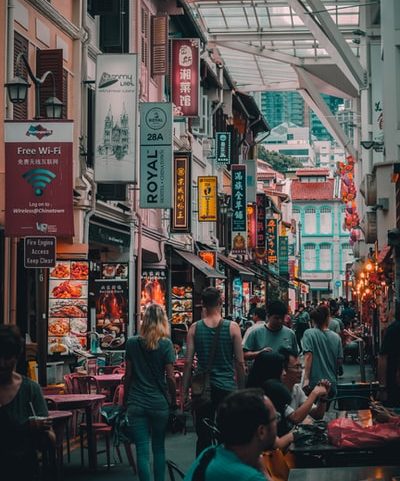World
Singapore’s Unique COVID-19 Containment Plan

With the emergence of a 2020 worldwide pandemic, nations have seen hits to a multitude of social and economical sectors. The impacts are seen around the globe, with 19 million confirmed cases worldwide, as well as approximately 712,000 tragic deaths (Via WHO).
The rate at which the virus has unraveled economies and traumatized citizens speak to the unpreparedness of worldwide leaders. Unfortunately, a lot of countries adopted disappointing anti-COVID-19 strategies in the early stages, giving the virus more time to spread.
On the other hand, multiple countries concocted robust response strategies and swiftly helped minimize the pandemic’s impact.
Leading the pack is the small nation of Singapore; this article is primarily intended to explore how the Singaporean government’s efficient response to the outbreak, and their unique plan of action.
Lessons learned from Singapore’s Successful Anti-COVID-19 strategy.
Having endured the SARS outbreak of 2002, one can reasonably infer that the Singaporean government would be well equipped for COVID-19 damage control. Singapore’s 2020 approach has had three major components; Willful political response, efficient healthcare management, and steady financial policy response.
Political response.
Undoubtedly, citizens in chaos need strong leadership to restore faith in their policymakers. Doing so allows governments to easily deploy nationwide frameworks and campaigns, allowing for efficient action.
Immediately after the virus had first broken out in China, Singapore’s political establishment did not wait for the WHO before unrolling their containment plan. Instead, the country’s leadership moved swiftly and packaged the relevant and right messaging about the pandemic outbreak with an essential goal of sensitizing readiness. They began distributing masks, utilized preemptive testing, and took precautionary measures that the rest of the globe didn’t. It all stems from Singapore’s MOH (Ministry of health). Doctors were granted privileges to test patients for COVID-19 out of reasonable suspicion, even if the patient didn’t meet the immediate criteria. As opposed to other nations, Singapore acted proactively. They didn’t immediately release cured patients, they traced and contained possible cases through contacts of the infected, and they put extra emphasis on travel. In short, Singapore didn’t wait until the virus became a problem before unveiling a nationwide initiative.
Professor Dale Andrew Fisher, chair of the National Infection Prevention and Control Committee of the Singaporean Ministry of Health, wrote an interesting piece on the Conversation:
“It’s really about leadership being organized enough to get the messaging right as a team. Then people will feel more comfortable and are much more likely to follow the rules.”
Efficient healthcare management.
The post-SARS virus outbreak signaled the need for Singapore to build a medical infrastructure, with the potential to respond to abrupt pandemic situations. Since 2004, the country has built more hospitals and unfavorable pressure rooms as part of an advanced initiative to prepare for the worst. When COVID-19 broke out, Singapore was ready to put its decade long national emergency medical readiness to work.
The authorities adopted a national quarantine strategy that significantly minimized the risk of spreading the virus in public. Singapore disbanded the idea of allowing people with the virus to carry out a voluntary self-isolation quarantine in their homes. Every person whom they found with the virus was immediately isolated, taken to a special place to be looked after while containment officials embarked on an aggressive contact-tracing campaign.
In addition, the MOH handed out wearable COVID-19 tracing devices to all citizens, allowing their vitals to be monitored. The first round was given out to a plethora of citizens, specifically high-risk elders.
Steady financial policy response.
As early as February, the Singaporean Ministry of Finance announced what was known as “the Stabilization and Support Package.” Worth $4 billion, the first phase of stimulus spending cushioned the blow of COVID-19 on local businesses and workers.
On March 26, a second stimulus package dubbed “the Resilience Budget” worth a generous $48.4 billion was rolled out to support households, help workers stay employed, and provide support for small businesses. In industries hit by the pandemic
On April 6, 2020, a third stimulus package worth $5.1 billion, known as “the Solidarity Budget” was introduced. Targeting the livelihood of the local workforce, it received extremely positive feedback.
On May 26, the Singaporean Government announced a fourth stimulus package worth $33 billion known as “the Fortitude Budget” with the purpose of focusing on creating jobs and building skills for workers, boosting transformation for enterprises, and strengthening resilience in the working-class community.
Therefore, Singapore’s anti-COVID-19 strategies provide a template for the rest of the world to model. One of the significant points to learn from Singapore’s response is the emphasis on organized leadership. Any Pandemic needs a sober political system with the willpower to reassure the country about their readiness to bring everything under control. With their proactiveness and calm control, Singapore represents the ideal response to a global catastrophe.
